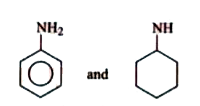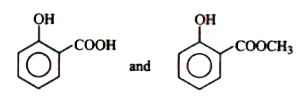Moss protonema can be differentiated from filamentous alga in
Long rhizoids
Coenocytic nature
Oblique septa
Absence of chloroplasts.
The correct Answer is:C
To differentiate moss protonema from filamentous algae, we can follow these steps:
1. Understanding Protonema:
- Protonema is the initial stage in the life cycle of mosses, consisting of a thread-like chain of cells. It is crucial to recognize that this structure is specific to mosses and is part of their gametophyte development.
2. Evaluating the Options:
- Option 1: Long Rhizoids:
- Rhizoids are root-like structures that anchor the gametophyte. However, they develop only on the mature gametophyte of mosses and are not present on the protonema itself. Thus, this option is incorrect.
- Option 2: Sinusitic Nature:
- Sinocytic (or syncytial) nature refers to a structure with multiple nuclei, typically found in certain algae and fungi. Moss protonema does not exhibit this characteristic, making this option incorrect as well.
- Option 3: Oblique Septa:
- The protonema of mosses is characterized by brown-walled cells that are separated by oblique septa. This is a distinct feature that differentiates it from filamentous algae, which do not have such septa. Therefore, this option is correct.
- Option 4: Absence of Chloroplasts:
- Both moss protonema and filamentous algae contain chloroplasts, which are essential for photosynthesis. Hence, this option cannot be used for differentiation.
3. Conclusion:
- After evaluating all the options, the correct way to differentiate moss protonema from filamentous algae is through the presence of oblique septa in the protonema of mosses.
Final Answer:
Moss protonema can be differentiated from filamentous algae in having oblique septa.
---
- Protonema is the initial stage in the life cycle of mosses, consisting of a thread-like chain of cells. It is crucial to recognize that this structure is specific to mosses and is part of their gametophyte development.
- Option 1: Long Rhizoids:
- Rhizoids are root-like structures that anchor the gametophyte. However, they develop only on the mature gametophyte of mosses and are not present on the protonema itself. Thus, this option is incorrect.
- Option 2: Sinusitic Nature:
- Sinocytic (or syncytial) nature refers to a structure with multiple nuclei, typically found in certain algae and fungi. Moss protonema does not exhibit this characteristic, making this option incorrect as well.
- Option 3: Oblique Septa:
- The protonema of mosses is characterized by brown-walled cells that are separated by oblique septa. This is a distinct feature that differentiates it from filamentous algae, which do not have such septa. Therefore, this option is correct.
- Option 4: Absence of Chloroplasts:
- Both moss protonema and filamentous algae contain chloroplasts, which are essential for photosynthesis. Hence, this option cannot be used for differentiation.
- After evaluating all the options, the correct way to differentiate moss protonema from filamentous algae is through the presence of oblique septa in the protonema of mosses.
Moss protonema can be differentiated from filamentous algae in having oblique septa.
Topper's Solved these Questions
- KINGDOM PLANTAE OR METAPHYTA BOOK - DINESH PUBLICATION ENGLISHCHAPTER - KINGDOM PLANTAE OR METAPHYTA EXERCISE - CYG
20 Videos
- KINGDOM MONERA (THE PROKARYOTES)BOOK - DINESH PUBLICATION ENGLISHCHAPTER - KINGDOM MONERA (THE PROKARYOTES)EXERCISE - CHECK YOUR GRASP
20 Videos
- KINGDOM PROTISTA (UNICELLULAR EUKARYOTES)BOOK - DINESH PUBLICATION ENGLISHCHAPTER - KINGDOM PROTISTA (UNICELLULAR EUKARYOTES)EXERCISE - CHECK YOUR GRASP
19 Videos
Similar Questions
Knowledge Check
 Can be differentiated by : Acarbylamine reactionBH2SO4Cdiazotisation followed by β - naphtholDmustard oil reaction
Can be differentiated by : Acarbylamine reactionBH2SO4Cdiazotisation followed by β - naphtholDmustard oil reaction
Can be differentiated by :AFeCl3BNaOHCNaNO2+HClDFehling's solution Can be differentiated by : ANaOHBNa metalCNaHCO3DFeCl3
Can be differentiated by : ANaOHBNa metalCNaHCO3DFeCl3

 can be differentiated by
can be differentiated by  Can be differentiated by :
Can be differentiated by :